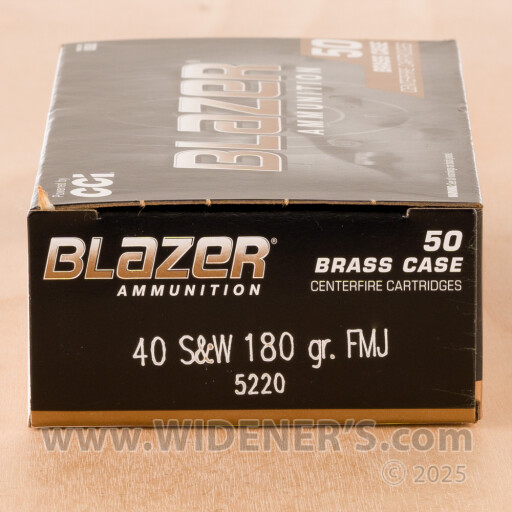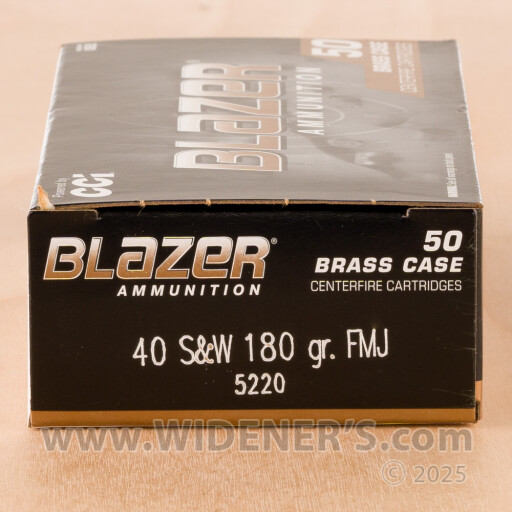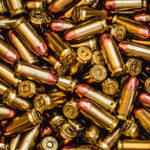
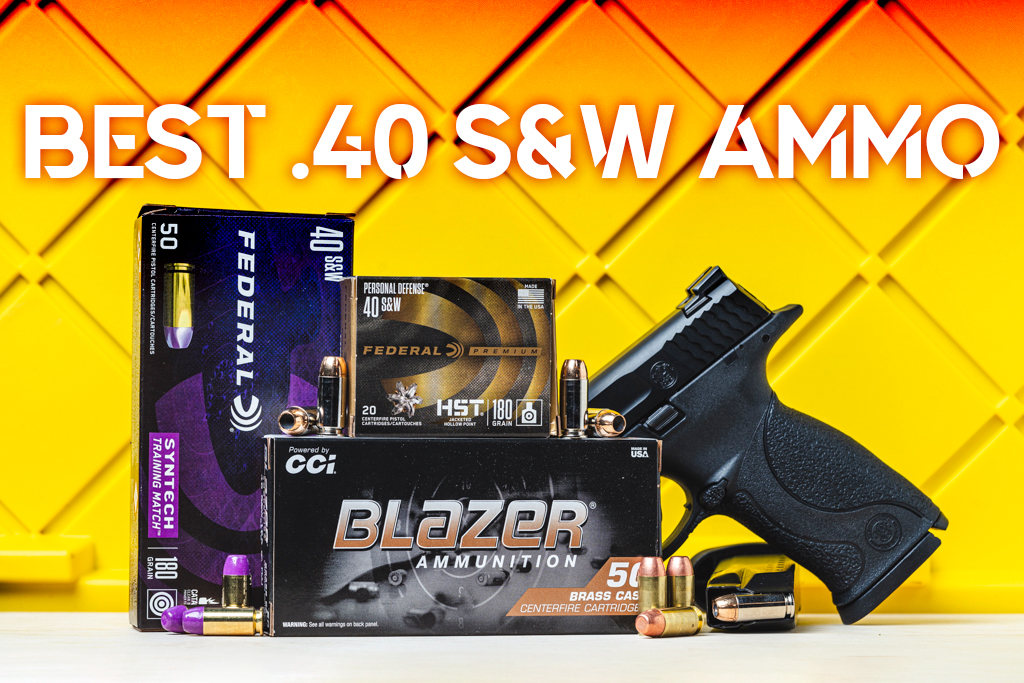
When it comes to versatility and power in the handgun world, the .40 S&W stands out as a top choice for many shooters. Whether you’re at the range, training, or considering self-defense options, the .40 S&W cartridge is a viable option. Below, we’ll explore the history and capabilities of this caliber and provide our picks for the best .40 S&W ammo.
Best 40 S&W Ammo – Our 3 Picks
When compiling our list of the best .40 S&W ammo, we considered availability, performance, and reliability. With that in mind, our list of the best .40 S&W ammo includes:
Plinking & Training – Blazer Brass .40 S&W 165gr
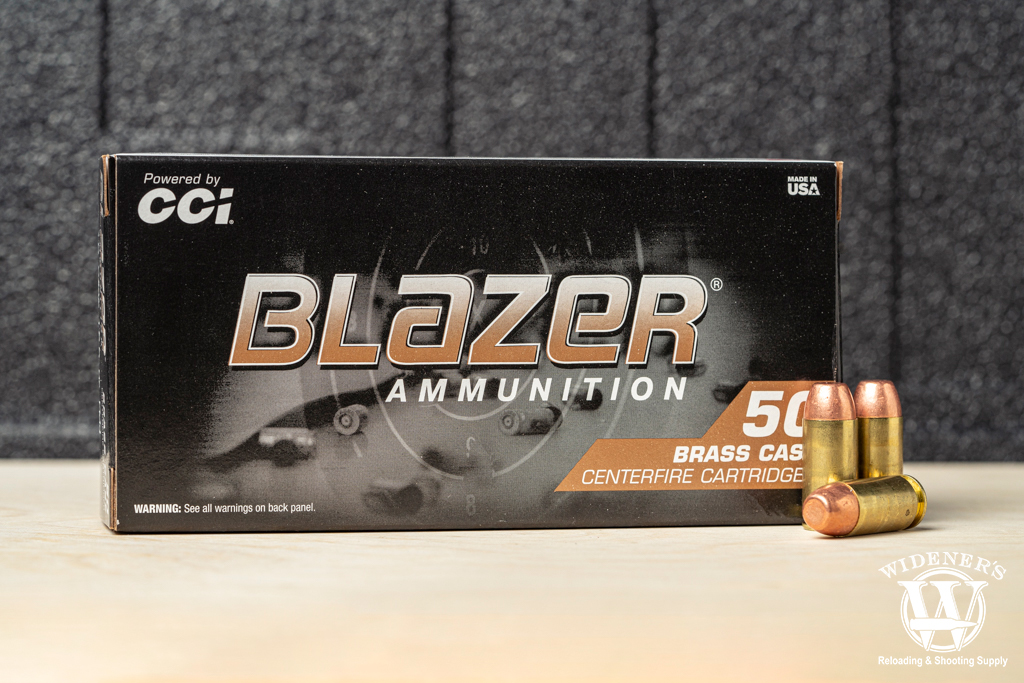
Blazer Brass .40 S&W 165gr is a great choice for plinking or training at the range.
Blazer Brass is one of my favorite ammo brands for training and plinking. The ammo is made right here in the United States, and the cartridges feature reloadable brass casings.
Their most popular practice cartridge is the 165-grain full metal jacket option. Its muzzle velocity is 1,50 feet per second, and its muzzle energy is .404 ft-lbs.
| Caliber | Bullet Type | Bullet Weight | Velocity (Muzzle) | Energy (Muzzle) | 25 Yards (Velocity/Energy) | 50 Yards (Velocity/Energy) | 100 Yards (Velocity/Energy) |
|---|---|---|---|---|---|---|---|
| .40 S&W | FMJ | 165gr | 1,050 FPS | 404 FT LBS | 1,015 FPS/377 FT LBS | 971 FPS/345 FT LBS | 911 FPS/304 FT LBS |
Range/Match – Syntech Training Match .40 S&W 180gr

You aren’t going to find a better lead-free training round than the Syntech Training Match .40 S&W 180gr.
Federal’s Syntech Training Match 180-grain bullets are an excellent option for maximum accuracy and performance. They have a distinct purple tip and offer the same velocity, trajectory, and point of impact as Federal’s personal defense HST rounds. Oh, and they are the same bullet weight.
These bullets have a patented Syntech Jacket Flat Nose design. They leave the muzzle at 1,010 feet per second and produce .408 ft-lbs of energy at the muzzle.
| Caliber | Bullet Type | Bullet Weight | Velocity (Muzzle) | Energy (Muzzle) | 25 Yards (Velocity/Energy) | 50 Yards (Velocity/Energy) | 100 Yards (Velocity/Energy) |
|---|---|---|---|---|---|---|---|
| .40 S&W | JFN | 180gr | 1,010 FPS | 408 FT LBS | 980 FPS/384 FT LBS | 954 FPS/364 FT LBS | 908 FPS/329 FT LBS |
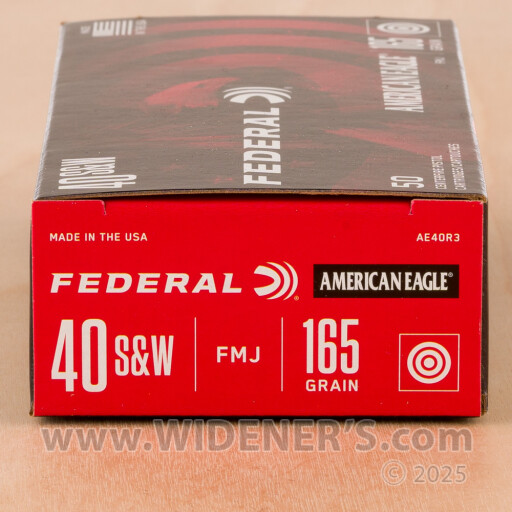
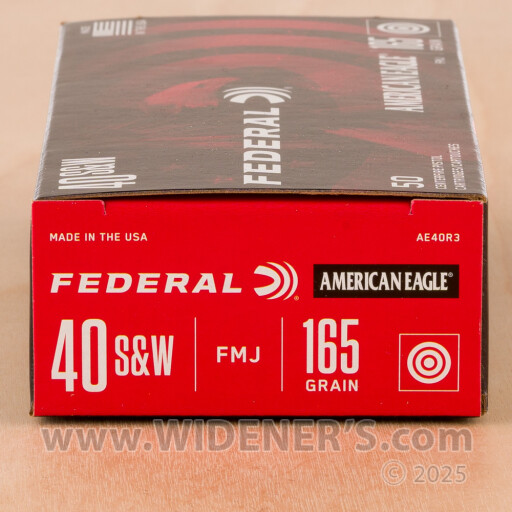
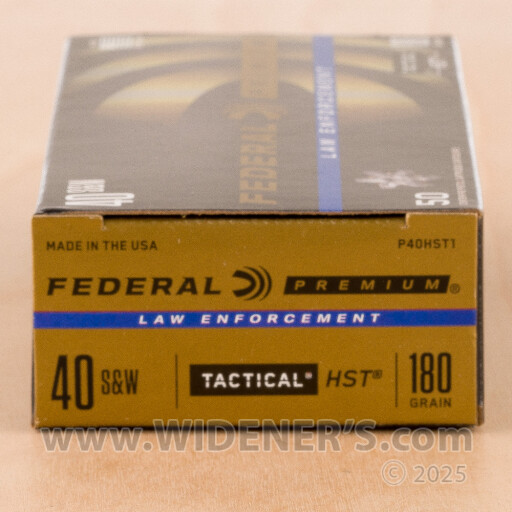
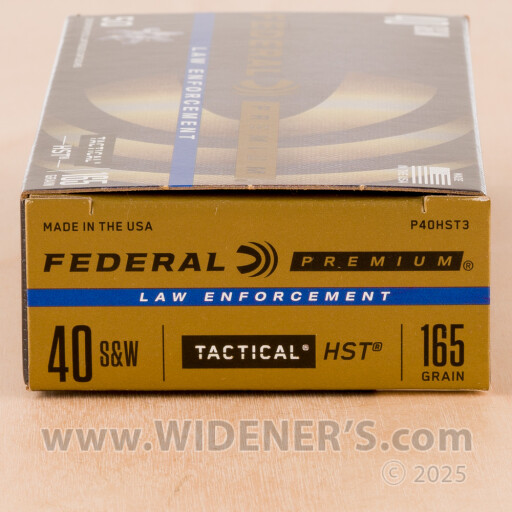
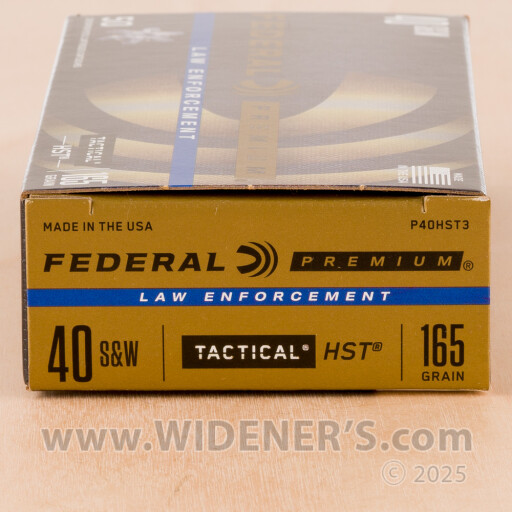
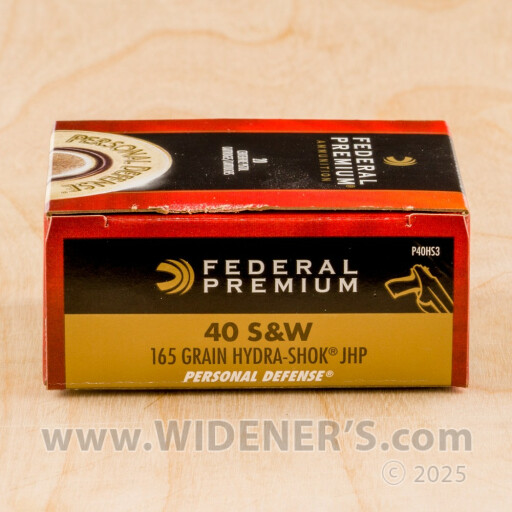
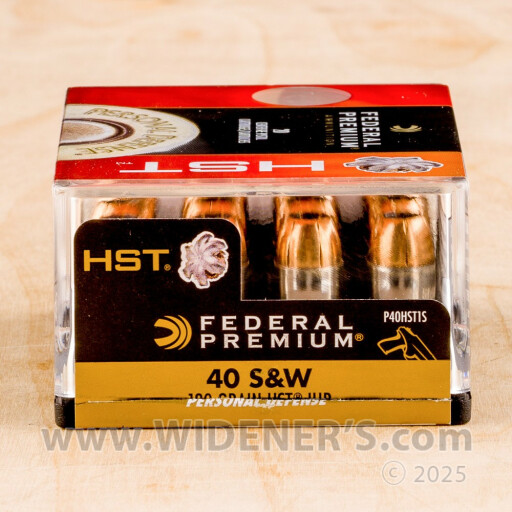
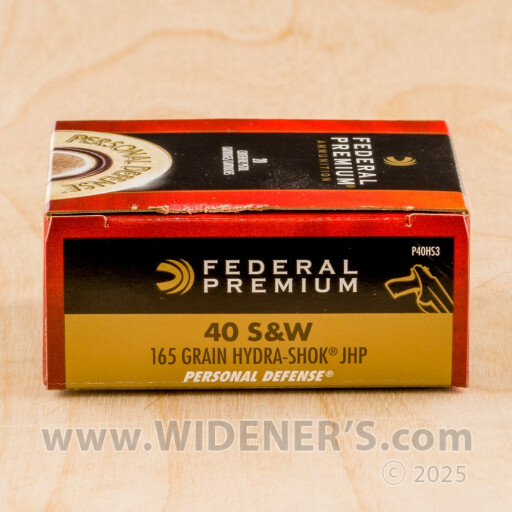
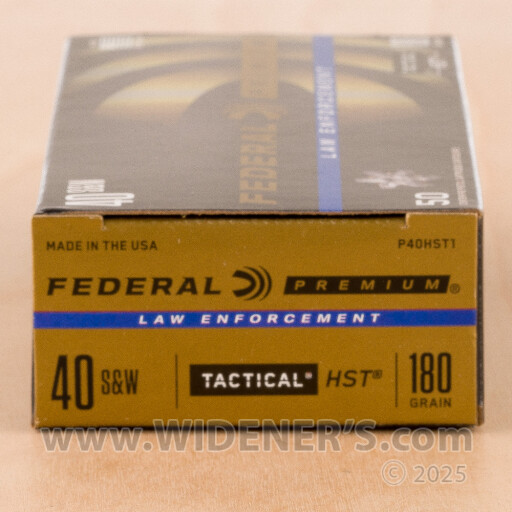
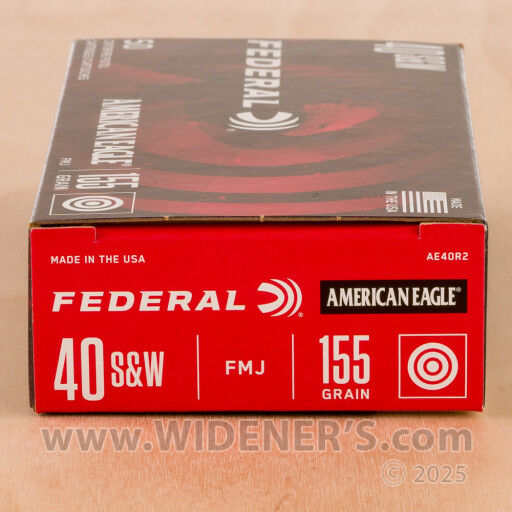
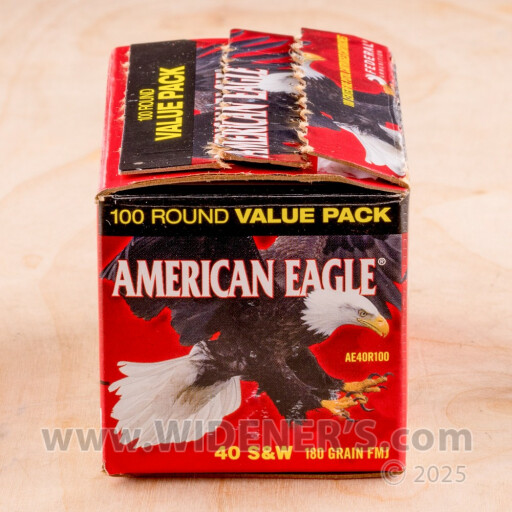
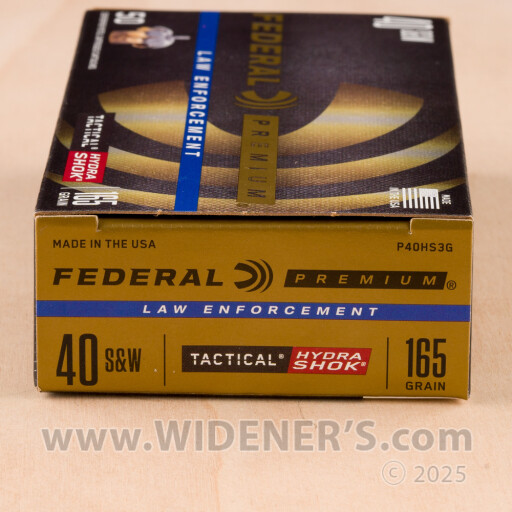
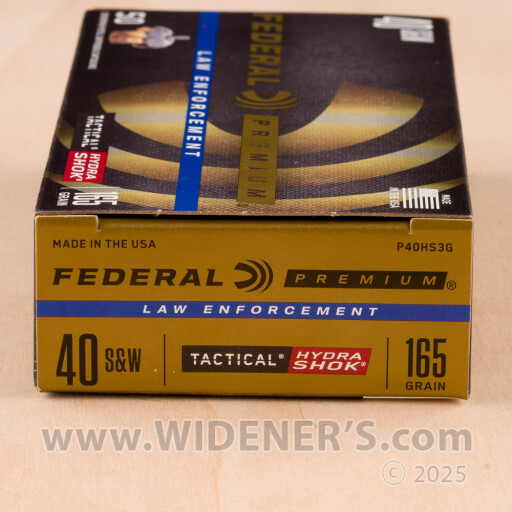
Home/Personal Defense – Personal Defense HST .40 S&W 180gr

When it comes to home defense, Federal’s Premium HST .40 S&W 180-grain bullets are king.
Federal Premium HST .40 S&W 180-grain bullets are an excellent self-defense option. Law enforcement agencies worldwide trust them due to their consistent performance, excellent stopping power, and reliability.
These projectiles have a muzzle velocity of 1,010 FPS. They produce .408 ft-lbs of muzzle energy.
| Caliber | Bullet Type | Bullet Weight | Velocity (Muzzle) | Energy (Muzzle) | 25 Yards (Velocity/Energy) | 50 Yards (Velocity/Energy) | 100 Yards (Velocity/Energy) |
|---|---|---|---|---|---|---|---|
| .40 S&W | JHP | 180gr | 1,010 FPS | 408 FT LBS | 980 FPS/384 FT LBS | 954 FPS/364 FT LBS | 908 FPS/329 FT LBS |
 Federal Premium LE 40 S&W 180 Grain HST JHP - 50 Rounds
$39.85
Shop Now
Federal Premium LE 40 S&W 180 Grain HST JHP - 50 Rounds
$39.85
Shop Now
 Federal Premium Law Enforcement 40 S&W 165 Grain HST JHP - 50 Rounds
$39.85
Shop Now
Federal Premium Law Enforcement 40 S&W 165 Grain HST JHP - 50 Rounds
$39.85
Shop Now
 Federal Premium Law Enforcement 40 S&W 165 Grain HST JHP - 1000 Rounds
$799.85
Shop Now
Federal Premium Law Enforcement 40 S&W 165 Grain HST JHP - 1000 Rounds
$799.85
Shop Now
 Federal Premium Law Enforcement 40 S&W 180 Grain HST JHP- 1000 Rounds
$799.85
Shop Now
Federal Premium Law Enforcement 40 S&W 180 Grain HST JHP- 1000 Rounds
$799.85
Shop Now






Cartridge Specs

The .40 S&W casing can handle more pressure than the .45 ACP, despite its size and powder capacity being smaller.
.40 S&W ammunition bridges the gap between power and manageability. It typically comes in bullet weights ranging from 135 to 180 grains, offering a balance of velocity and energy transfer. Its dimensions allow for high-capacity magazines in handguns without significantly increasing size or recoil. In terms of size, it’s larger than a 9mm bullet but smaller than a .45 ACP round.
| Cartridge Specs | .40 S&W |
|---|---|
| Parent Casing | 10mm Auto |
| Bullet Diameter | .400″ |
| Neck Diameter | .423″ |
| Base Diameter | .424″ |
| Case Length | .850″ |
| Overall Length | 1.135″ |
| Grain Weight | 115-200gr |
| Max Pressure (SAMMI) | 35,000 PSI |
Ballistics Overview
The ballistics of .40 S&W ammo are impressive, with a good balance of speed and stopping power. For example, 165gr FMJ rounds are great for plinking and training, offering reliable performance. The 180gr HP/JHP options for self-defense provide deeper penetration and controlled expansion. They are also slightly more resistant to wind and other external factors.
However, the heavier rounds are a bit snappier. If you want to carry 180gr as a self-defense cartridge, you should practice with ammo of the same weight. While 180gr training ammo won’t perform exactly like hollow points, keeping your bullet weights consistent will help you maintain better accuracy in all shooting scenarios. As Marcus Lutrell said, “You play like you practice and practice how you play.”
Best 40 S&W: Brief History
Developed in the late 1980s as a law enforcement cartridge, the .40 S&W was born from the need for more stopping power than the 9mm and less recoil than the .45 ACP. Smith & Wesson and Winchester collaborated for its creation, marking a pivotal moment in handgun ammunition development. They officially released the .40 S&W on January 17, 1990.
The Federal Bureau of Investigations requisitioned the development of the .40 S&W following a shootout between FBI agents and bank robbers in Miami in 1986. The agents used 9mm handguns, which were ineffective in subduing the heavily armed (and armored) subjects.
Ironically, the FBI made a big push to adopt the 9mm in the early 1980s. Before that, many agents carried a 1911 handgun chambered in .45 ACP. The switch to the 9mm seemed logical, because semi-automatic handguns chambered in 9mm could hold far more rounds than the 1911. The 9mm is far less snappy, making it a more manageable round overall.
However, the events of 1986 had the FBI (and law enforcement everywhere) reconsidering their decision. The .40 S&W was meant to fill the gap between the manageability of the 9mm and the stopping power of the .45 ACP.
.40 S&W: Pros & Cons
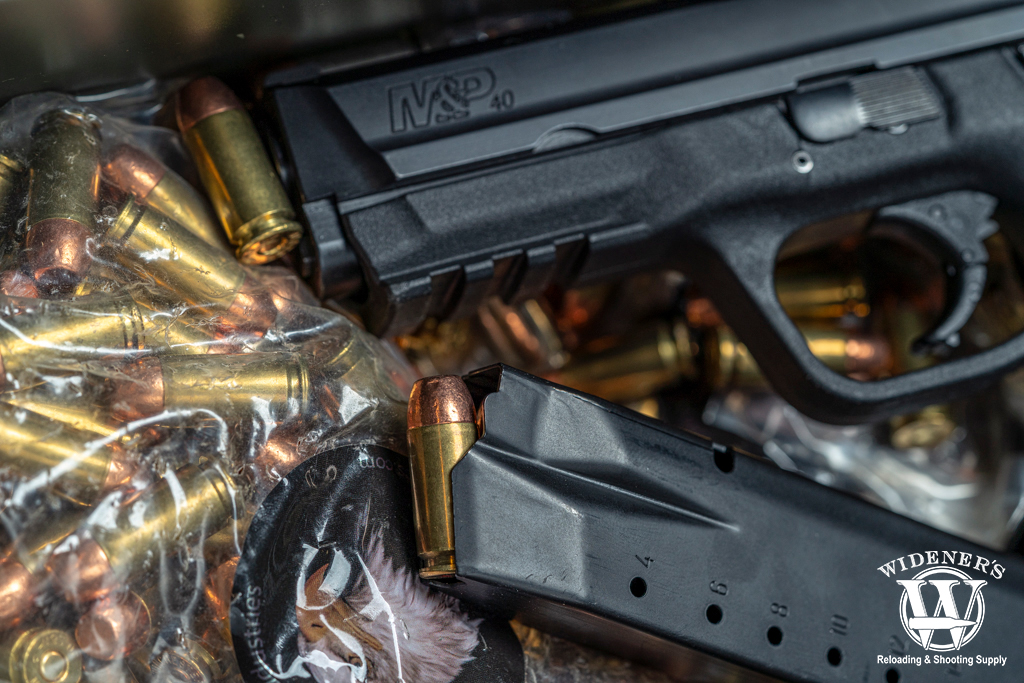
The most common complaint about the .40 S&W cartridge is its recoil.
Every cartridge has benefits and drawbacks. Knowing a caliber’s strengths and weaknesses is essential before committing to it. With that in mind, let’s explore what the .40 S&W does well and where it falls behind other calibers.
The Pros
First off, the .40 S&W provides excellent stopping power. However, if you’ve read our article on stopping power (insert link), you’ll know this concept is pretty subjective. A well-placed shot will stop most threats in their tracks, even if you use something a bit smaller and less powerful, like a 9mm or .38.
However, if your shot placement is less than ideal, using a heavier bullet like the .40 S&W can make a difference. The cartridge transfers more energy and creates a larger wound channel than smaller projectiles.
The .40 S&W is also great for self-defense and training purposes. There is a broad selection of ammunition in production, and it’s usually pretty easy to find.
The Cons
The .40 S&W has more recoil than the 9mm, which can be a problem for some shooters. Many law enforcement agencies, including the FBI, have since transitioned back to the 9mm. Overall, the 9mm is more shooter-friendly, especially for smaller-framed individuals.
The .40 S&W is also larger than the 9mm. Guns chambered in .40 S&W will have a slightly lower magazine capacity compared to 9mm handguns. However, this difference is negligible. For instance, full-size Glocks chambered in 9mm (Glock 19) usually hold between 15 and 17 rounds. The Glock 22 is chambered in .40 S&W and holds 15 rounds.
40 S&W VS 9mm
When it comes to the debate between .40 S&W and 9mm projectiles, each caliber offers distinct advantages tailored to different preferences and purposes. The .40 S&W was developed as a law enforcement cartridge to provide an optimal balance between the high capacity of the 9mm and the stopping power of the .45 ACP.
It delivers a heavier bullet with more energy on target, which can translate to more stopping power — a critical factor in defensive shooting situations. The standard .40 S&W projectile ranges from about 135 to 180 grains, offering a significant impact but with a correspondingly higher recoil than the 9mm.
On the other hand, 9mm has gained immense popularity due to its lighter recoil, higher magazine capacity, and lower cost per round. Its projectiles typically range from 115 to 147 grains, providing a more manageable shooting experience, leading to improved accuracy and faster follow-up shots for novice and experienced shooters alike. While it may deliver less energy on target than the .40 S&W, advancements in bullet technology have significantly enhanced the 9mm’s effectiveness for self-defense.
Ultimately, the choice between .40 S&W and 9mm comes down to personal preference. Considerations include the desired balance of power, capacity, and recoil that best fits the shooter’s needs.
Best Uses For The Caliber
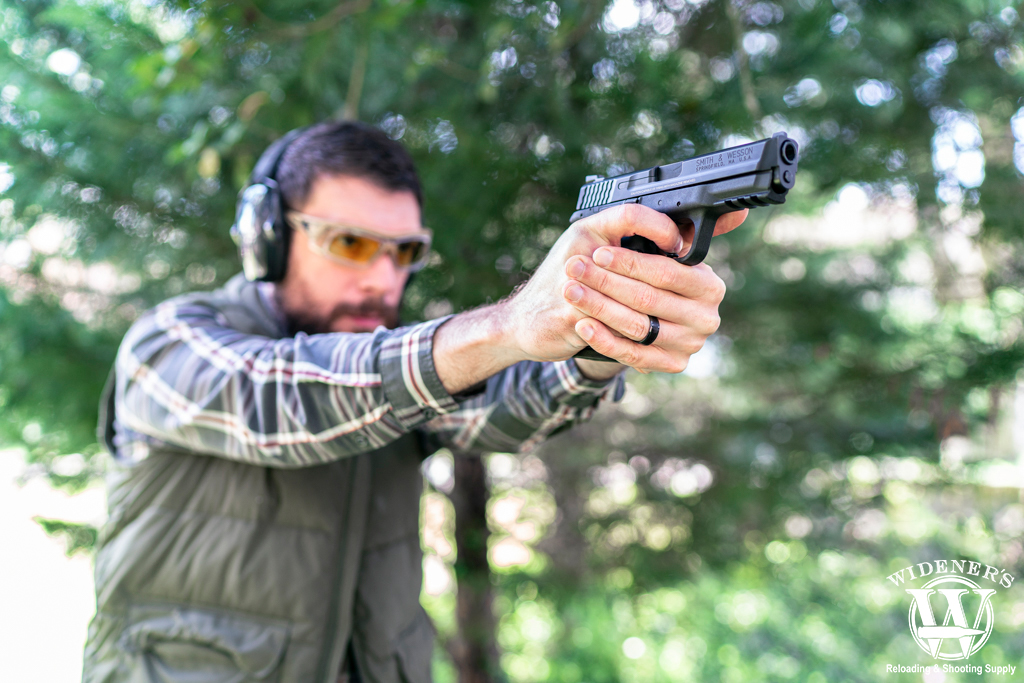
.40 S&W is no slouch, it combines power and performance that wedges between the ballistic profiles of 9mm and 10mm.
The .40 S&W is ideal for a wide range of activities, from casual target shooting (plinking) and serious range training to competitive shooting and personal or home defense. Its effectiveness in quickly stopping threats makes it a preferred choice for law enforcement and civilians alike.
Choosing the right .40 S&W ammo involves considering your specific needs, whether that’s training at the range with FMJ rounds, participating in matches with high-quality Syntech rounds, or ensuring your safety with top-tier HP/JHP rounds like the Federal Premium HST. Understanding this caliber’s history, specifications, and how it compares to others, like the 9mm, allows you to make an informed decision tailored to your shooting goals.


